Gum Baking

What are the most common ingredients used in gluten-free baking ?
Gluten-free baking is a method of preparing baked goods without using wheat flour or other sources of gluten. Here are the most common ingredients used in gluten-free baking: Flours and Starches: Rice Flour, Almond Flour, Potato Starch, Tapioca Flour, Cornstarch Binding Agents: Xanthan Gum, Guar Gum, Eggs Sweeteners: Honey, Maple Syrup, Stevia Fats and Oils: Butter, Coconut Oil, Olive Oil

What are some tips for beginners in baking ?
Baking is a rewarding hobby that can bring joy and delicious treats to your life. Here are some tips to help beginners get started: 1. Read the recipe thoroughly before starting. 2. Use the right ingredients, fresh and as specified in the recipe. 3. Prep your ingredients beforehand. 4. Follow the recipe steps carefully. 5. Practice patience during the baking process. 6. Learn from your mistakes and keep practicing.

What are the best tools for baking that every kitchen should have ?
The essential baking tools for a kitchen include measuring cups and spoons, digital scales, mixing bowls of various materials, whisks, mixers, baking pans, oven mitts, thermometers, cooling racks, rolling pins, pastry cutters, cookie scoops, parchment paper, piping bags, offset spatulas, zesters, and dough punches. These tools ensure precise measurements, effective mixing, even baking, and easy handling of baked goods, contributing to successful and consistent baking outcomes.

What are some common mistakes people make when baking cookies ?
Baking cookies is a beloved pastime for many, but it can also be fraught with pitfalls. Here are some common mistakes people make when baking cookies: Not measuring ingredients accurately using volume measurements instead of weight, incorrect use of measuring tools, not sifting dry ingredients, overmixing or undermixing the dough, handling the dough too much, not preheating the oven, not using an oven thermometer, placing cookies too close together, using inferior quality chocolate or nuts, substituting ingredients without adjustment, not bringing eggs and butter to room temperature, underbaking or overbaking, not rotating the cookie sheet, baking at the wrong temperature, storing cookies improperly, and not considering shelf life. By avoiding these common mistakes, you can elevate your cookie game and enjoy consistently delicious treats every time you bake.

How does proper cooking and baking contribute to food safety ?
Food safety is crucial for maintaining public health and preventing illnesses. Proper cooking and baking are vital components of food safety, as they can destroy harmful microorganisms that may contaminate raw ingredients. High temperatures during cooking and baking kill most bacteria, reduce viruses, and eliminate parasites. Additionally, proper cooking practices prevent cross-contamination by using separate utensils and cutting boards for different types of food. To ensure food safety during cooking and baking, it's essential to use a food thermometer to check the internal temperature of cooked foods, follow recipes and time guides, keep work surfaces and equipment clean, store raw and cooked foods separately, avoid overcrowding pans, and refrigerate leftovers promptly. By adopting these best practices, you can significantly minimize the risk of foodborne illnesses and enjoy safe, delicious meals.

How do I make a non-toxic all-purpose cleaner using vinegar and baking soda ?
Vinegar and baking soda can be combined to create a non-toxic all-purpose cleaner. Ingredients include white vinegar, water, baking soda, a measuring cup, and a spray bottle. Mix one cup of vinegar with one cup of water and add one tablespoon of baking soda. Shake well before using on most surfaces. Test on a small area first and avoid use on certain surfaces such as marble or unfinished wood. This homemade cleaner is effective, environmentally friendly, and cost-efficient.

What is the importance of dental hygiene in overall health ?
The Importance of Dental Hygiene in Overall Health Dental hygiene is an essential aspect of maintaining good overall health. Poor dental hygiene can lead to a range of health problems, including gum disease, tooth decay, and bad breath. In this article, we will explore the importance of dental hygiene in overall health and provide tips for maintaining good oral health. How Dental Hygiene Affects Overall Health Gum Disease: Gum disease, also known as periodontal disease, is caused by the buildup of plaque on the teeth and gums. If left untreated, it can lead to inflammation, infection, and even tooth loss. Gum disease has been linked to several systemic health problems, including heart disease, diabetes, and respiratory disease. Tooth Decay: Tooth decay occurs when bacteria in the mouth produce acids that eat away at the enamel on the teeth. This can lead to cavities, pain, and even tooth loss if left untreated. Tooth decay can also affect overall health by causing digestive problems and nutritional deficiencies. Bad Breath: Bad breath, also known as halitosis, is often caused by poor dental hygiene. It can be embarrassing and may even affect social interactions. In some cases, chronic bad breath can be a sign of underlying health problems, such as gum disease or respiratory infections. Tips for Maintaining Good Oral Health Brush Your Teeth Twice a Day: Brushing your teeth twice a day with fluoride toothpaste helps remove plaque and bacteria from your teeth and gums. Floss Daily: Flossing daily helps remove plaque and bacteria from between your teeth where your toothbrush cannot reach. Visit Your Dentist Regularly: Regular dental checkups and cleanings can help identify and treat potential problems early on before they become more serious. Eat a Healthy Diet: Eating a healthy diet low in sugar and high in nutrients can help keep your teeth and gums healthy. Drink Water: Drinking water throughout the day helps rinse away food particles and bacteria in your mouth. Avoid Tobacco Products: Smoking or using other tobacco products can increase your risk of developing gum disease and other oral health problems. Limit Alcohol Consumption: Drinking too much alcohol can dry out your mouth and increase your risk of developing gum disease and other oral health problems.
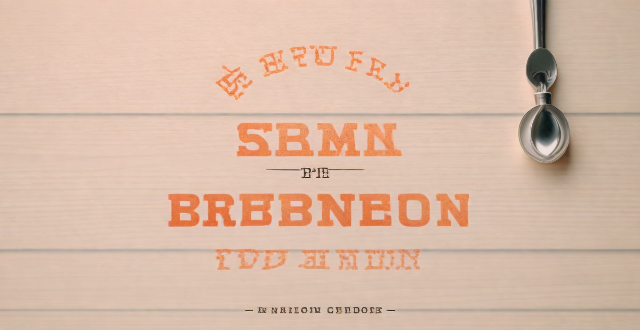
What's the easiest method to bake salmon in the oven ?
This text provides a step-by-step method for baking salmon in the oven, including preheating the oven, preparing and seasoning the salmon, optionally wrapping it, baking, checking for doneness, serving, and enjoying. It also offers tips on avoiding overcooking and varying seasonings. The process is designed to yield tender, flaky salmon every time.

How do I unclog a drain without calling a plumber ?
Unclogging a drain is a common household problem that can be solved without calling a plumber. Here are some steps you can follow to unclog your drain: 1. Identify the clogged drain by looking for signs such as slow draining, gurgling sounds, and bad odors. 2. Gather your tools, including a plunger, baking soda, vinegar, boiling water, and a drain snake (optional). 3. Use a plunger to create suction and dislodge any blockages in the pipe. 4. If the plunger doesn't work, try using baking soda and vinegar. Pour 1/2 cup of baking soda into the drain, followed by 1/2 cup of vinegar. Let the mixture sit for 10-15 minutes, then pour boiling water down the drain. 5. If the previous methods don't work, use a drain snake to break up any blockages in the pipe. Run hot water through the drain to flush it away. 6. To prevent future clogs, avoid pouring grease or oil down your drains and regularly clean your drains with baking soda and vinegar.
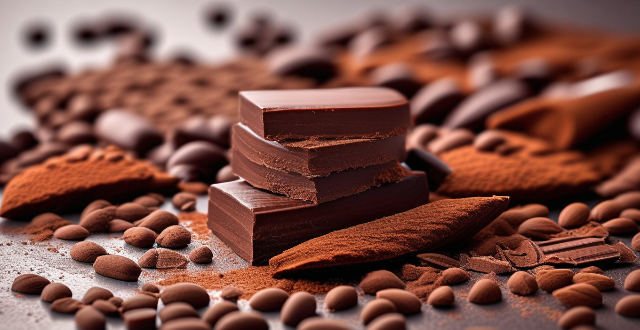
What is the secret to making soft and chewy brownies ?
The secret to making soft and chewy brownies involves using high-quality unsweetened chocolate, butter for tenderness, granulated sugar for chewiness, eggs for binding and structure, all-purpose flour for structure without toughness, cocoa powder for intensified chocolate flavor, and baking powder for leavening. Techniques include undermixing the batter, melting chocolate and butter together for smooth integration, baking at a lower temperature for a longer period to ensure even cooking, and avoiding overbaking. Add-ins like chocolate chips, nuts, or flavorings can enhance the experience. Key steps involve preheating the oven, mixing dry ingredients, melting chocolate and butter, combining wet ingredients, adding dry to wet, baking, cooling, and cutting. Tips for success include using room-temperature ingredients, avoiding overbaking, and letting the brownies rest before cutting.

What are the best techniques for cooking seafood ?
The article provides a summary of the best techniques for cooking seafood, which include poaching, grilling, steaming, and baking. Poaching is a gentle method of cooking seafood in a flavorful liquid such as water, broth or wine. Grilling is ideal for firm-fleshed fish like salmon or swordfish and adds flavor and texture to seafood. Steaming is a healthy way to cook seafood without adding extra fat and works well for fish fillets or shellfish like clams or mussels. Baking is a dry heat method that works well for thicker cuts of fish like cod or haddock. The article emphasizes the importance of paying attention to timing and temperature to avoid overcooking seafood.
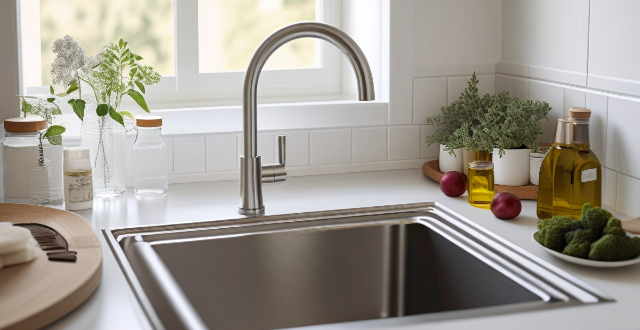
What is the best way to clean and maintain stainless steel kitchen appliances ?
Stainless steel kitchen appliances require proper cleaning and maintenance to keep them looking their best. To clean them, gather materials such as a microfiber cloth, mild dish soap, water, white vinegar, baking soda, and olive or mineral oil for polishing. The cleaning process involves removing grease and stains with a damp cloth, rinsing and drying the surface, removing stubborn stains with a baking soda paste, and polishing the surface with oil. In addition to regular cleaning, maintenance tips include avoiding harsh chemicals and abrasive cleaners, using a gentle touch when cleaning, keeping appliances away from direct sunlight and heat sources, and using protective covers when not in use.

What is the importance of dental hygiene in pets and how can it be maintained ?
The Importance of Dental Hygiene in Pets Dental hygiene is a crucial aspect of your pet's overall health and well-being. Poor dental hygiene can lead to various health issues, including bad breath, gum disease, tooth loss, and even more severe problems like heart, liver, or kidney disease. Therefore, maintaining good dental hygiene for your pets is essential. Maintaining dental hygiene in pets involves several steps that should be incorporated into their daily routine. These steps include regular brushing, dental chews and toys, regular checkups with a veterinarian, specialized dental foods, and homemade remedies. Incorporating these steps into your pet's daily routine can help keep their teeth healthy and prevent potential health issues down the line.

How do I bake a fluffy vanilla sponge cake ?
Baking a fluffy vanilla sponge cake is a delightful experience for both beginners and seasoned bakers. Here are the steps to follow: ### Ingredients: - **200g All-purpose flour** - **200g Granulated sugar** - **100g Unsalted butter (room temperature)** - **4 Large eggs** - **1 tsp Baking powder** - **1/2 tsp Salt** - **1 tbsp Vanilla extract** ### Tools: - Mixing bowls - Electric mixer or whisk - Measuring cups and spoons - Sieve - 8-inch cake pan - Parchment paper - Oven ### Steps: #### Preheat Your Oven 1. **Preheat your oven to 175°C (350°F).** #### Prepare Your Pan 2. **Line the bottom of your cake pan with parchment paper.** #### Mix Dry Ingredients 3. **Sift together the flour, baking powder, and salt.** #### Cream Butter and Sugar 4. **In a separate bowl, cream the butter and sugar until light and fluffy.** #### Add Eggs and Vanilla 5. **Add the eggs one at a time, mixing well after each addition. After all the eggs are incorporated, add the vanilla extract.** #### Combine Wet and Dry Ingredients 6. **Gradually fold the dry ingredients into the wet mixture, being careful not to overmix.** #### Bake Your Cake 7. **Pour the batter into your prepared pan and smooth the top. Bake for 25-30 minutes, or until a toothpick inserted into the center comes out clean.** #### Cool and Decorate 8. **Allow the cake to cool in the pan for 10 minutes before turning it out onto a wire rack to cool completely. Once cooled, you can decorate as desired.**
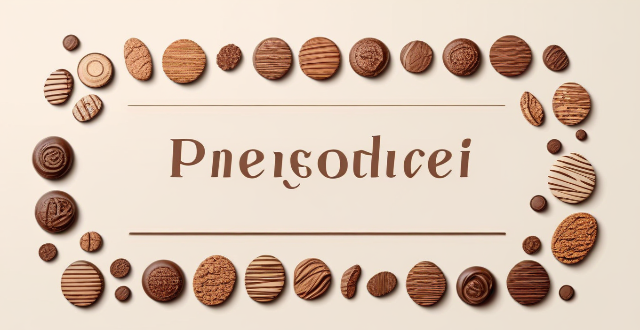
How do I make the perfect chocolate cake ?
This text provides a detailed guide on how to make the perfect chocolate cake, including a list of ingredients and step-by-step instructions. It emphasizes precision, patience, and specific techniques for achieving a rich, moist, and delicious result. The guide covers everything from preheating the oven and mixing ingredients to baking and cooling the cake. Additionally, it offers tips for success such as sifting dry ingredients, ensuring room temperature ingredients, avoiding overmixing, proper oven rack position, and using a toothpick test to check doneness.

The kettle is easy to produce scale after being used for a long time. How can scale be easily removed

Can you provide a step-by-step guide for making bread at home ?
This step-by-step guide provides a comprehensive process for making bread at home, detailing the ingredients and tools required, as well as each stage of the bread-making process from proofing the yeast to baking. It emphasizes the importance of technique in kneading and rising, offers optional tips for enhancing texture, and concludes with instructions on how to bake and enjoy the homemade bread.

Is there a natural way to clean stains off my clothes ?
Removing stains from clothes can be challenging, but natural methods like using white vinegar, baking soda, lemon juice, hydrogen peroxide, and salt can effectively clean various types of stains. These techniques are gentle on the environment and clothing.

What are some effective home cleaning hacks ?
The article provides a comprehensive list of cleaning hacks for different areas of the home, such as the kitchen, bathroom, living area, and laundry room. Each section includes various tips and tricks to make cleaning easier and more efficient. For example, in the kitchen, using baking soda and vinegar can help degrease the oven, while steam cleaning with vinegar can easily clean the microwave. In the bathroom, soaking the showerhead in vinegar can remove deposits, and hydrogen peroxide can be used to clean tile and grout. The article also suggests using natural ingredients like olive oil and lemon juice for furniture polish and saltwater spray for ironing clothes. By following these simple yet effective cleaning hacks, readers can maintain a clean and organized home without spending too much time on cleaning tasks.

What are some healthy and low-calorie recipes for weight loss ?
Weight loss is a common goal for many people, but it can be difficult to find healthy and low-calorie recipes that taste good. Here are some healthy and low-calorie recipes that you can try: 1. Roasted Brussels Sprouts with Garlic and Parmesan Cheese: This recipe involves trimming and halving 2 cups of Brussels sprouts, mincing 3 cloves of garlic, and combining them with olive oil, salt, pepper, and grated Parmesan cheese before roasting in the oven. 2. Baked Salmon with Lemon and Dill Sauce: This recipe involves placing skinless salmon fillets on a baking sheet and whisking together lemon juice, dill weed, salt, pepper, olive oil, white wine vinegar, honey, and water before pouring over the fish and baking in the oven. 3. Zucchini Noodles with Pesto Sauce: This recipe involves spiralizing or cutting zucchini into noodles using a spiralizer, cooking them in olive oil until softened, adding pesto sauce, salt, pepper, chopped parsley leaves, and freshly grated Parmesan cheese if desired before serving warm.
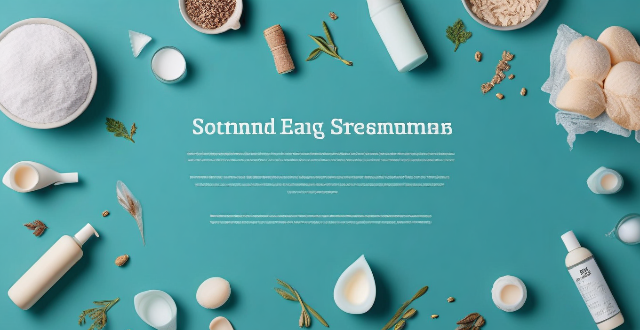
How do I make a natural bathroom scrub that's safe for septic systems ?
This text is a guide on how to make a natural bathroom scrub that's safe for septic systems. The ingredients are baking soda, coconut oil, liquid castile soap, and essential oil (optional). The instructions include mixing the ingredients together until well combined, transferring to a clean jar or container with a lid, and using by massaging into skin using circular motions.

What are the best natural ingredients for making homemade cleaning products ?
Cleaning your home doesn't have to involve harsh chemicals or expensive store-bought products. With a few natural ingredients, you can create effective and eco-friendly cleaning solutions that are safe for your family and the environment. Here are some of the best natural ingredients for making homemade cleaning products: 1. White Vinegar: A versatile and inexpensive cleaning agent that cuts through grease, disinfects surfaces, removes stains and odors, and deodorizes the air. Use it as an all-purpose cleaner, glass cleaner, or oven cleaner. 2. Baking Soda: A gentle yet powerful abrasive that tackles tough cleaning jobs without scratching surfaces. It neutralizes acidic odors, leaves no residue behind, and can be used as a sink and tub scrub, carpet deodorizer, or laundry booster. 3. Lemon Juice: A natural disinfectant and deodorizer that leaves surfaces smelling fresh and clean. It cuts through grease, leaves a pleasant citrus scent, and can be used as an all-purpose cleaner, chrome polish, or hardwater stain remover. 4. Castile Soap: A vegetable-based soap that is gentle on skin and surfaces while still being effective at cutting through dirt and grime. It is biodegradable, eco-friendly, and can be used in various dilutions for different purposes such as an all-purpose cleaner, floor cleaner, or handwash. 5. Essential Oils (Optional): While not strictly cleaning agents, essential oils can enhance the effectiveness of your homemade cleaning products by adding antibacterial properties and a pleasant scent. Popular choices include tea tree oil, lavender oil, and lemon oil.
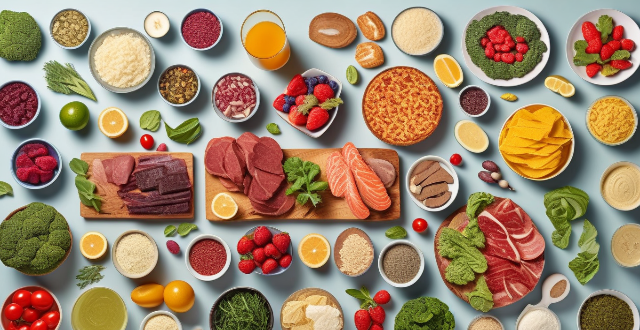
What are some good gluten-free food options for people with celiac disease ?
Celiac disease is an autoimmune disorder that damages the small intestine and requires a strict gluten-free diet. Good gluten-free food options for people with celiac disease include fruits and vegetables, meat and fish, gluten-free grains and starches like quinoa and brown rice, dairy products, nuts and seeds, gluten-free flours and baking mixes, and gluten-free snacks and beverages like popcorn and juices.
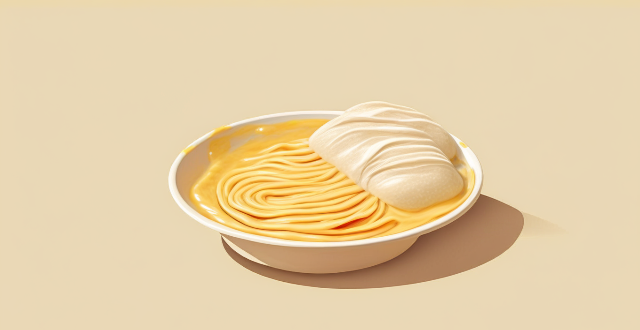
How can I improve my pie crust recipe ?
To improve your pie crust recipe, focus on using high-quality ingredients like all-purpose flour and unsalted butter. When mixing the dough, combine dry ingredients first, then cut in cold butter until it resembles coarse crumbs. Gradually add ice-cold water and gently knead the dough until it forms a cohesive ball. Avoid overworking the dough to prevent toughness. For rolling out the dough, chill it first to firm up the butter and prevent shrinkage. Roll out the dough on a lightly floured surface to an even thickness of about 1/8 inch. Carefully transfer the rolled-out dough to your pie plate, trim excess, and crimp the edges as desired. Blind bake single crust pies by pre-baking with pie weights or dried beans for 15-20 minutes at 375°F before adding the filling. For double crust pies, brush the top crust with an egg wash for shine and seal cracks or gaps. Cut small slits in the top crust to vent steam during baking. Bake at the specified temperature (usually between 350°F and 375°F) and check for doneness by inserting a knife into the center of the filling; if it comes out clean, the pie is ready. Allow it to cool completely before slicing to avoid a runny filling.